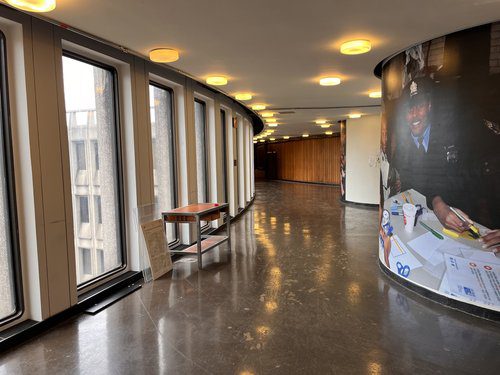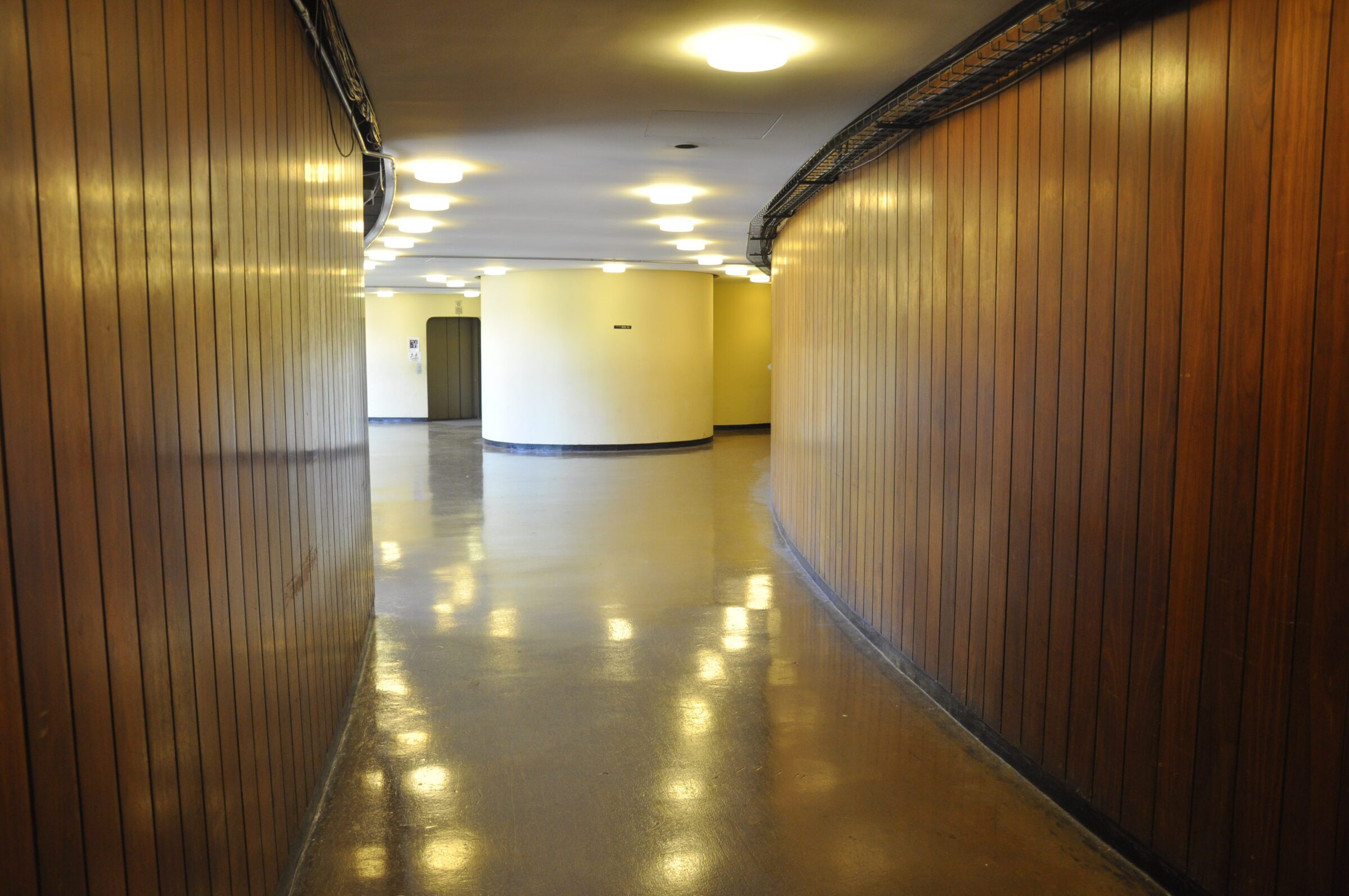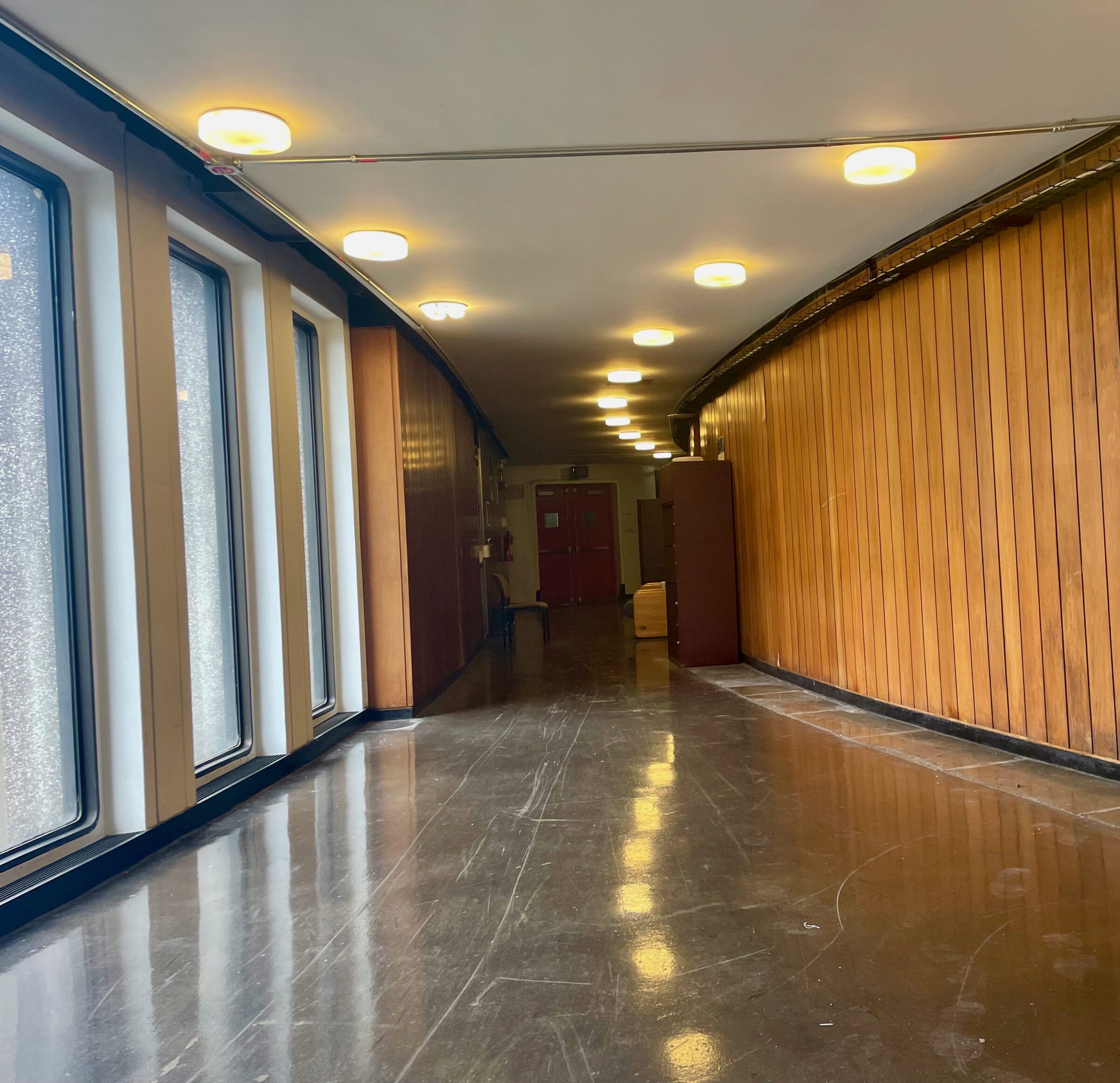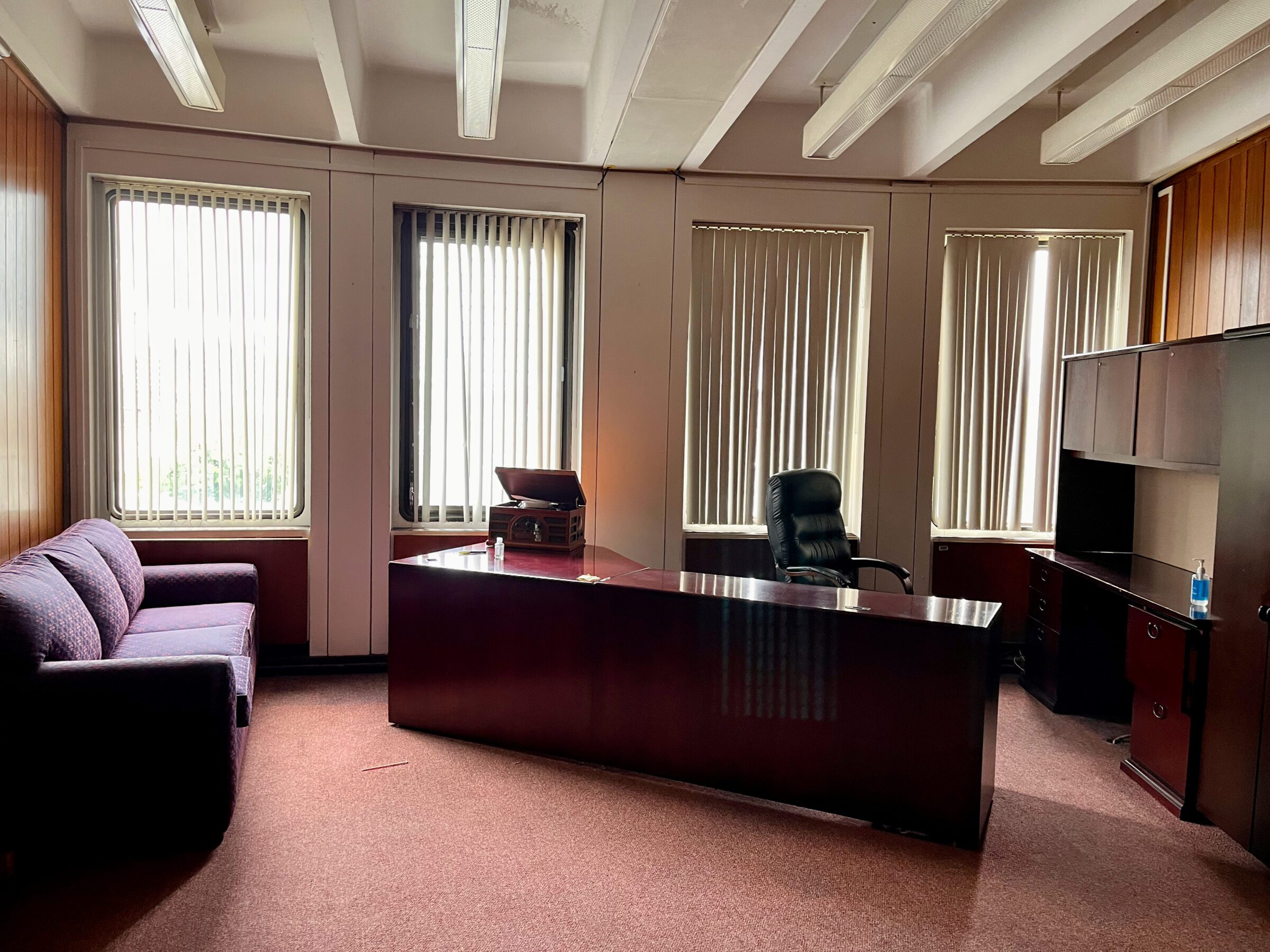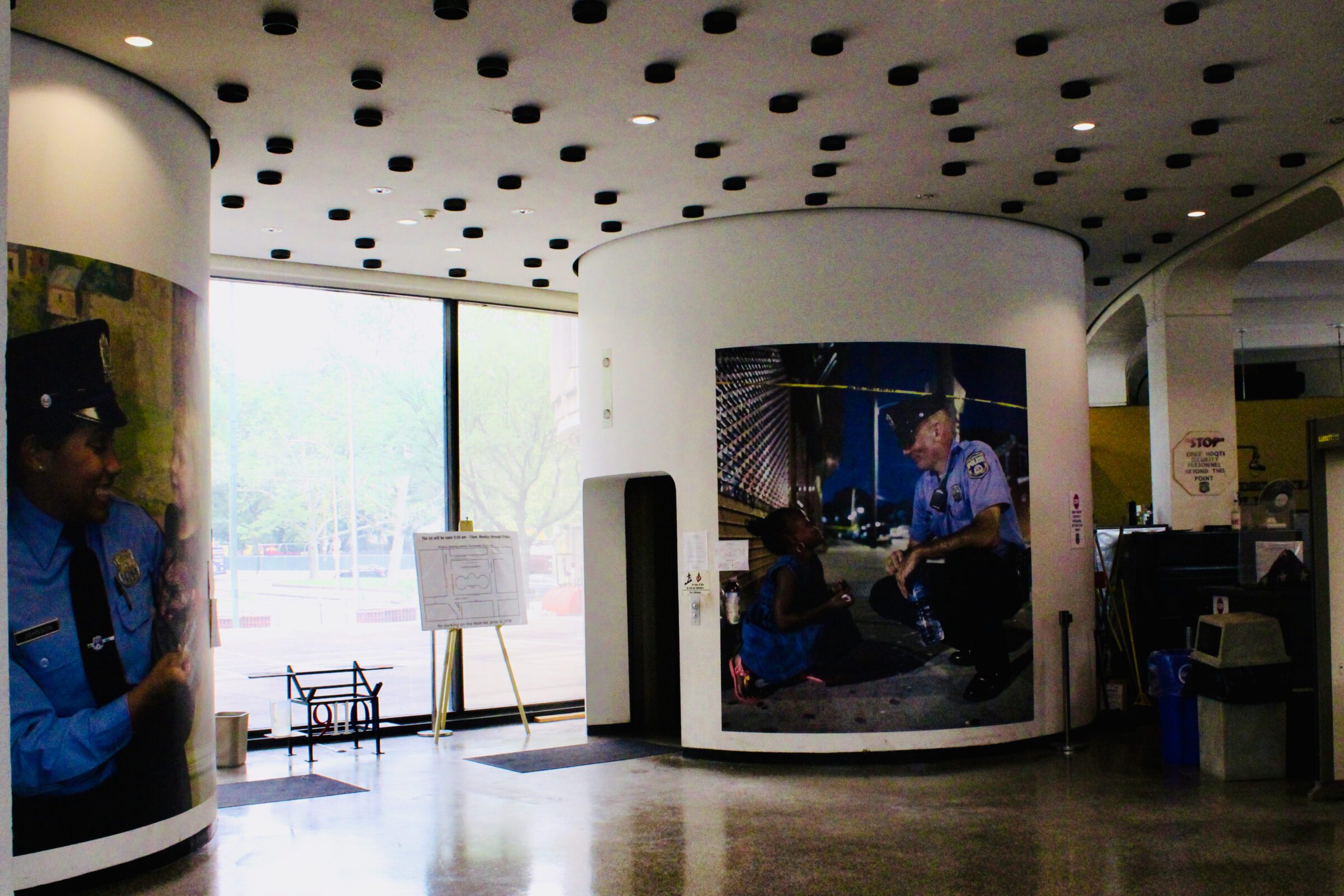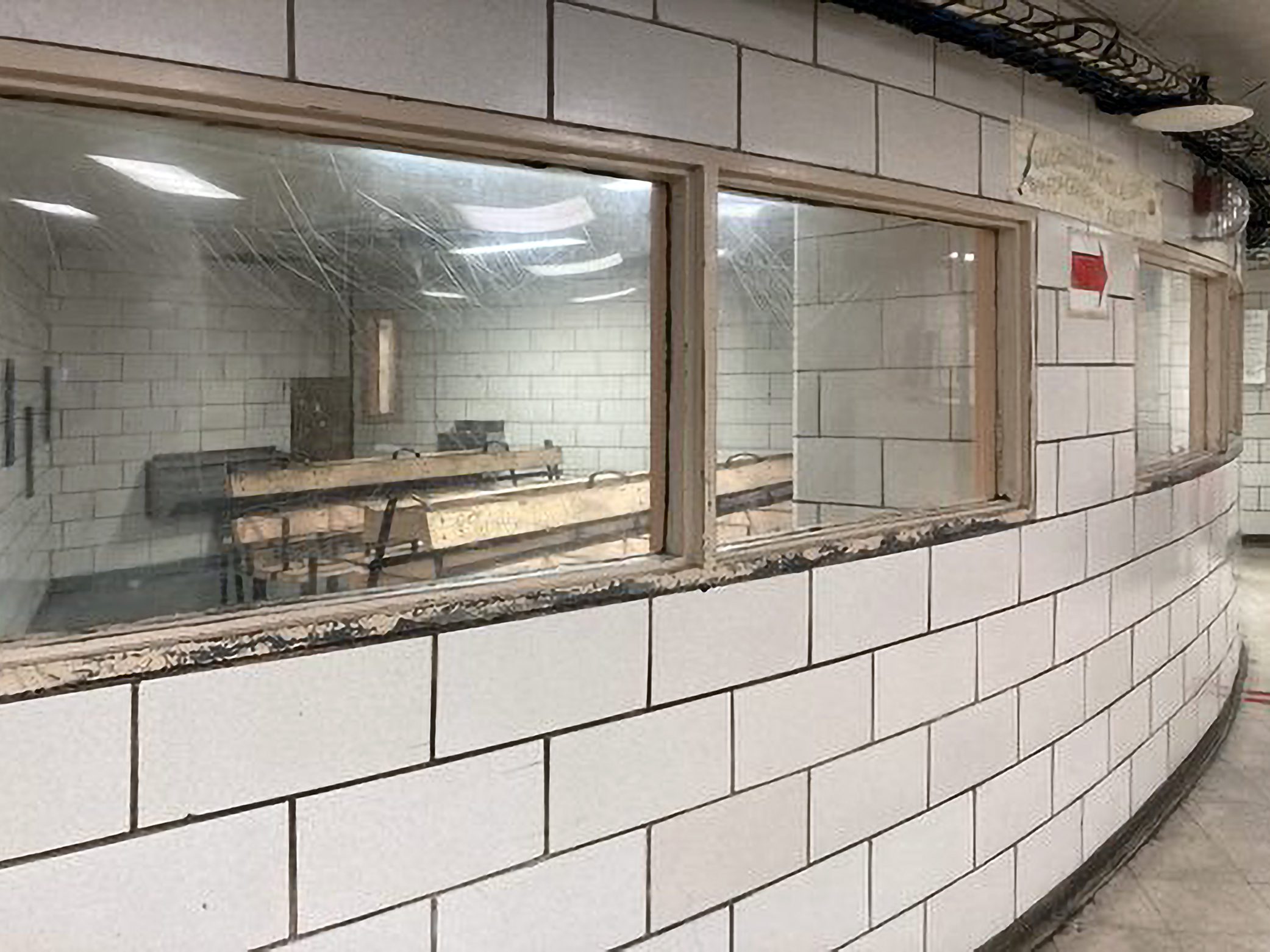Architecture
Designed by the internationally-recognized Philadelphia firm Geddes Brecher Qualls Cunningham in 1959 and completed in 1962, the Police Administration Building is a quintessential example of Philadelphia School modernism, and among the first buildings in the United States to expertly utilize the form and function of precast concrete.
Design
The Philadelphia Police Headquarters (PPHQ), commonly known as The Roundhouse, was designed in 1959 by the eminent Philadelphia architecture firm Geddes, Brecher, Qualls, and Cunningham (GBQC) and the preeminent structural engineer, Dr. August Komendant. The building was constructed by the Sovereign Construction Company between 1959 and 1962 at 700-734 Race Street, between Seventh and Eighth streets, adjacent to the south side of Franklin Square. The building is a prominent example of the architectural trends of the Post-World War II years. The design for the PPHQ reflects significant aesthetic principles developed by GBQC in their earlier academic training at Harvard University and in their second-place finish in the Sydney Opera House competition, one of the most prestigious and notable architectural competitions of the twentieth century.

The Roundhouse is further notable as a signature work of the informal group of local midcentury architects today recognized as the Philadelphia School, as well as for its almost exclusive use of architectural precast concrete and state-of-the-art post-tensioning engineering to support a fully integrated building system. According to Inga Saffron, “Geddes and Komendant were able to realize something that was almost unthinkable in the days before computers: a building that had the qualities of sculpture.” The iconic curvilinear form and massing of the building respect but soften the gridded plan of Philadelphia with sweeping, poetic architectural verve that is evocative of the Expressionist style of architecture—rather than Brutalist, a common misnomer. Comparable mid century buildings include Jan Utzon’s Sydney Opera House, Eero Saarinen’s TWA terminals at JFK Airport and Dulles Airport, and John Johansen’s U.S. Embassy in Dublin.
The stylistic identity is further defined by the building’s envelope, through the precast concrete panels that integrate the structural, mechanical, and electrical systems. These panels were manufactured using the Schokbeton process, an innovative method of precasting concrete that flourished during the mid-twentieth century and was used for a number of other prominent examples of Modern architecture designed by Louis Kahn, Minoru Yamasaki, Philip Johnson, Moshe Safdie, Marcel Breuer, and Edward Durrell Stone.
Next Up:

